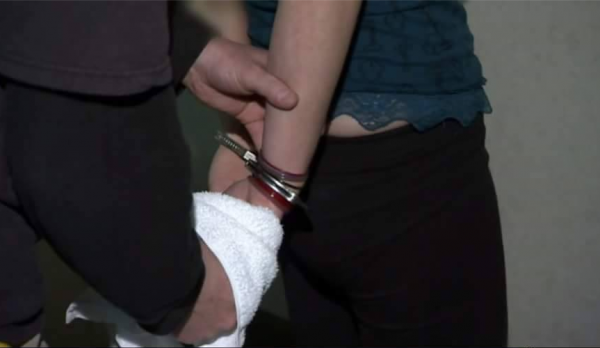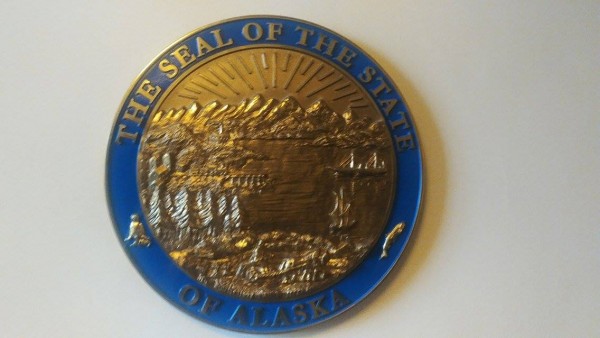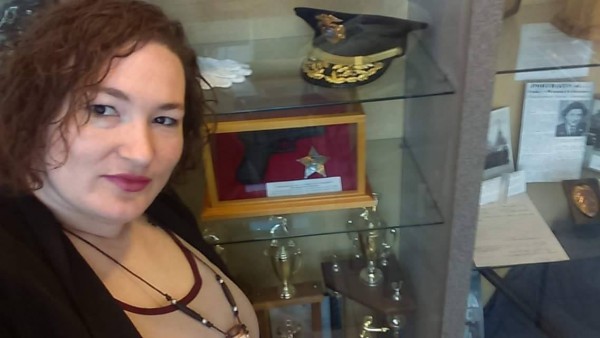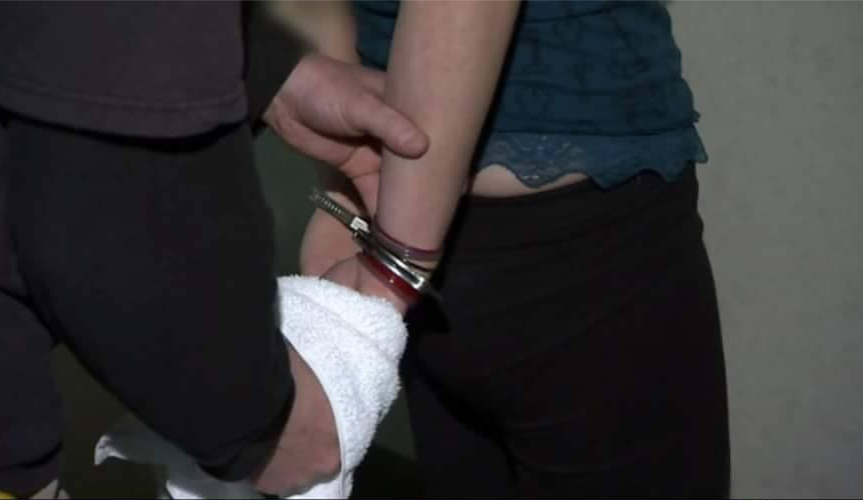
In the FBI’s 2013 Uniform Crime Report, released in November 2014, Alaska reported 648 prostitution arrests: 1 juvenile and 647 adults. This number is up from 38 arrests in 2012 and 69 in 2011. How could prostitution arrests have jumped so much in just one year?
They didn’t. Alaska maintains a report entitled Crime In Alaska, based on the same numbers that are submitted to the FBI for the Uniform Crime Report. In Crime In Alaska 2013, released in 2014, the state reports only 46 prostitution arrests in 2013: 22 sellers and 24 buyers of sex. This number seems correct: the Anchorage Police Department reported 41 prostitution arrests, and the state made five prostitution charges in 2013. Stephen Fischer, an FBI spokesman, explained that the issue was caused by “an error for entering data.”
Just what kind of trouble can 602 imaginary prostitutes created by a typo by the FBI cause?

I spoke with Dr. Allan Barnes, a Professor of Justice at the University of Anchorage, Alaska. He explained that the Uniform Crime Report began in the 1920s and started being administered by the FBI in the 1930s. Participation in the UCR is voluntary, and some police departments choose not to report their arrests. The report itself has limitations: when a person commits several crimes in one incident, only one of the crimes is recorded in the UCR. However, the UCR provides definitional consistency to crime statistics across jurisdictions: police departments report crimes according to the UCR definition of a crime, not their own.
The Uniform Crime Report is what earned Alaska its shameful status as Rape Capital of the US and its new title as the Most Dangerous State in the US. Critics have pointed out that differences in definitions of crimes in different states can lead to inconsistent reporting in the UCR and population density relative to crime may be reported inaccurately, leading to inaccuracies in ratios. But what if the numbers are just wrong?
Norma Jean Almodovar, former Los Angeles Police Department employee and infamous “cop to call girl,” has been following rape and prostitution in the Uniform Crime report for decades.
“I’ve seen numbers undercounted for rapes and overcounted for prostitution arrests,” she said. “The various tables from the FBI never match up – one table shows one set of numbers while another table shows a different set. I don’t think they can count – and they sure don’t seem to be able to reconcile the reported arrests or reported crimes!”
Dr. Barnes shared a similar experience trying to count murders in Fairbanks, Alaska back in the early 90s – the numbers reported by the police, the mayor, the Crime in Alaska report, the borough, and the Uniform Crime report were all different.
The Uniform Crime Report is used to inform policy and to allocate law enforcement resources – for example, an increase of 1700% in prostitution arrests would lead officials to believe that there should be a corresponding response to this rash of prostitution. In a document entitled “Uniform Crime Reporting Statistics: Their Proper Use,” the FBI explains:
UCR crime statistics are used in many ways and serve many purposes. They provide law enforcement with data for use in budget formulation, planning, resource allocation, assessment of police operations, etc., to help address the crime problem at various levels… Legislators draft anti-crime measures using the research findings and recommendations of law enforcement administrators, planners, and public and private entities concerned with the problem of crime. The news media use the crime statistics provided by the UCR Program to inform the public about the state of crime.
Speaking about how the UCR is used, Dr. Barnes said, “policy becomes a matter of ‘who cares.’ If the local city council or the state legislature—with respect to, say, state police, or state troopers—they can look at [the UCR’s figures] and make decisions about funding. For example, and do we need more troopers? Do we need more police?”
If the Uniform Crime Report is wrong, maybe the state’s own Crime In Alaska report is the source to turn to for accurate information. In Crime In Alaska 2013, right after line 16A, Prostitution, comes line 16B, Assisting or Promoting Prostitution. Zero arrests are listed for assisting or promoting prostitution, yet a records request from December of 2013 turned up two people who had been arrested for and charged with promoting prostitution (a criminal statute whose name was changed from “promoting prostitution” to “sex trafficking” in 2012) that year.

Did the 2012 change in the name of the law confuse the reporting on it? How could a typo cause 602 “prostitute imaginaries” to be included in such an important publication? More importantly, can our government count? If we can’t depend on our government to accurately record its own arrests, how can we trust them to create appropriate policy to address crime?
“How much crime is there in Alaska?” Dr. Barnes said, “Well…there are about forty places in Alaska that don’t report to the UCRs.”
Despite this, Dr. Barnes thinks very little of the UCR goes wrong on the FBI side. He says more of the concern is at the front end – what’s reported by the police – rather than the back end.
“Sometimes there are political forces that might impact how police departments themselves classify crimes,” Dr. Barnes said.
“My main concern is that that number would be allowed to misrepresent to the public or to elected officials or policy makers the veracity of how many people are being affected,” said Maxine Doogan, a prostitute and activist. “My concern is that it would misappropriate already scarce resources into the already failed policy of arresting trafficked victims for prostitution.”
Doogan’s worries are not unfounded. In 2010, a sex trafficking victim was arrested in Alaska and charged with 24 counts of conspiracy to commit trafficking. In 2014, closely coinciding with the release of the 2013 Uniform Crime Report, the Alaska Bureau of Investigations started a new unit focused on sex trafficking. The Special Crimes Investigative Unit’s main purpose, according to a 2015 status report, is to “locate and rescue juvenile victims that are being forced to work as prostitutes in the commercial sexual exploitation of children,” but they have yet to charge anyone with trafficking a minor. Instead, they have arrested a sex worker who provided safety services to other sex workers, refused to take reports from sex workers who were crime victims, and followed up on other reports by contacting sex worker victims in a threatening or sexual manner. Human error and even incompetence in Alaska’s police departments may be forgivable, but these activities are not.

Cops sexually abusing prostitutes and people they catch with drugs is something which has been a HUGE issue for me for some time now. Long time sex worker activist Norma Jean Almodovar has been shouting from the mountain tops about this for many years. The Holtzclaw case was not the first, and while it has been framed as an attack on black women, and perhaps Holtzclaw did single out black women, what is obvious to me, is that he was preying upon prostitutes and women with criminal records. Looking at the broader picture, as in the wide variety of other cops, DA’s, Judges and law enforcement who have preyed upon sex workers with the complicit activities of prosecutors and investigating officers once a courageous woman has stepped forth to report, it is not an issue about race, it is an issue about opportunity and abuse of power. Black officer Anthony Rollins of Alaska had been protected for years by his badge, and had over 30 victims once finally brought to justice. Hispanic cop Sergio Alvarez of Sacramento had over 35 victims before he was finally brought down. There is a long list of these cop predators at Norma’s site in addition to an even longer list of pedophile cop abusers. I’ll never forget reading about the case of a police chief raping a three year old baby twice and getting PROBATION. many of these disgusting meat bags get questionable sentences and too often don’t have to register as sex offenders. THANK GOODNESS this case got ANY press at all! The Rollins and Alvarez cases happened as recently as 2012-13 and did you know about them? 35 victims is a LOT. their victims were of various ethnicities just as the predators are of various ethnicities. But we can JUST focus on ‘certain’ ethnicities which is what has happened in the Holtzclaw case. Had the women been white, I’m wondering if there would’ve been any press other than a few local reports. Let’s not forget that it took a woman with no criminal history for the Holtzclaw case to gain any traction! Otherwise, had he not raped a woman with a clear record, regardless of anyone’s skin color, he would likely still be raping. Very sad. Our people should be heard and appropriate action taken by authorities when they are sexually assaulted or raped by law enforcement. Let’s not forget that in various regions of the USA cops & FBI agents are allowed sexual contact with sex workers to arrest them. I don’t call that consensual. Or the woman judge who decided gang rape of an escort at gun point was merely ‘theft of services’. Or the other bitch Judge who said she wouldn’t bring rape charges against a cop because she didn’t think jurors would accept that a prostitute could be raped.
Narratives can help. But as we have seen far too often, narratives can also derail much needed discussions so that nothing really changes.
Holtzclaw one among many: https://youtu.be/wI8e_IRr3yM
Minors considered to be trafficking victims don’t trust cops: https://youtu.be/G5fZ1kIrhi8
If my cop raping post posted here, it seems something went wrong. I was on the Holtzclaw page but now it’s on Tara’s story. Not sure how that happened. Gotta love technology. LOL.